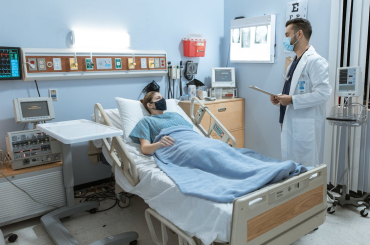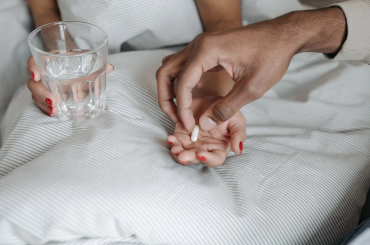Navigating the complicated waters of high school and college is challenging for most adolescents and young adults.
There’s academic pressure to excel and set yourself up for a successful career. There’s social pressure to fit in and develop friendships and romantic relationships. And there’s often physical pressure for those who are using athletics as a springboard to a scholarship or, in some cases, a possible profession.
It makes perfect sense that 7 in 10 teens in the United States name anxiety or depression as a major problem among peers in their community. And having a mental health concern makes a person more prone to using — and potentially abusing —substances.
According to a 2019 poll from the Substance Abuse and Mental Health Services Administration (SAMHSA), adolescents who had a major depressive episode in the previous year were morethan twice as likely to use illicit drugs, marijuana, and opioids and participate in binge drinking as those who didn’t struggle with depression.
Regardless of an association with mental illness, it’s clear that those who are finishing high school and entering college or the workforce are particularly prone to problems with alcohol or other drugs. In 2020, the percentage of people who were diagnosed with a substance use disorder was highest among people ages 18-25 — a startling 24.4%, or 8.2 million young adults.
Is this largely a result of academic pressure, or more a product of coming of age?
A Problem on College Campuses
For many young adults who are away from home for the first time, it’s only natural that they would experiment with aspects of life that may not have previously been available.
The National Institute of Alcohol Abuse and Alcoholism found that nearly half of all college students binge drink. College students also use marijuana and illicit drugs such as amphetamines, cocaine, and hallucinogens at a higher rate than any other age demographic, per a 2019 Monitoring the Future study.
“I think the greatest lie in American society is what we tell our youth about college,” Kristina Canfield, executive director and program manager of the Association of Recovery in Higher Education, told U.S. News and World Report in an August 2022 article. “We say things like, ‘These are the greatest years of your life,’ or, ‘This is the time to experiment,’ and that somehow gets lumped in with using drugs and alcohol.”
It’s hard to find a direct link to students abusing alcohol or most illicit drugs because of academic pressure, but there’s definitely a connection between so-called “study drugs” and the expectation to excel in school.
A 2016 study in the Journal of Clinical Psychiatry found an increase in the nonmedical use of Adderall, which is often prescribed to treat attention-deficit/
Much like prescription opioids, Adderall is known for its high potential for tolerance, which can lead to addiction. Studies show that as much as 35% of college students have tried Adderall without a prescription and are twice as likely to use it as nonstudents in their age group.
High Performers Less Likely to Misuse Substances
According to a 2009 National Risk Youth Behavior Survey, students who had higher grades were less likely to engage in consuming alcohol and other drug use behaviors than classmates who had lower grades.
Additionally, students who didn’t engage in these behaviors received higher grades than their classmates who did. Though the associations don’t prove causation, students who earned better grades were overall considerably less likely to have engaged in:
There’s little doubt that progressing through high school into college is a time of high anxiety for many adolescents and teens. To some extent, it’s a period of experimentation and confusion.
Adderall, as well as other study drugs, are prevalent in academic environments, and their properties tend to make it difficult for people to wean off these substances. But when it comes to alcohol and illicit drugs, we still need considerably more evidence before we can say that the pressure of the world of academia is leading young people to develop dangerous — and sometimes deadly — addictions.
About Huntington Creek Recovery Center
Huntington Creek Recovery Center is a premier provider of comprehensive residential addiction treatment services for adolescent males ages 13-18 and adults age 18 and older of all genders. Set on a serene, 40-acre campus in northeastern Pennsylvania, our facility offers a safe and







